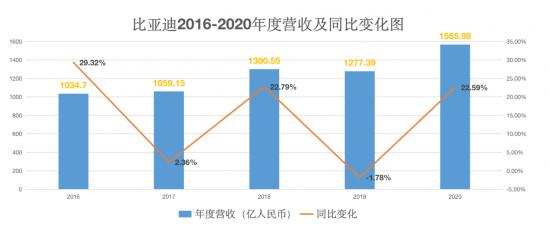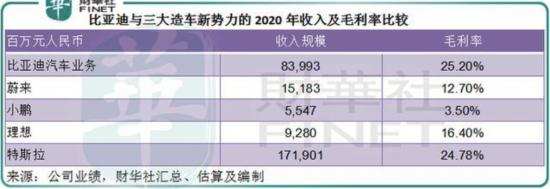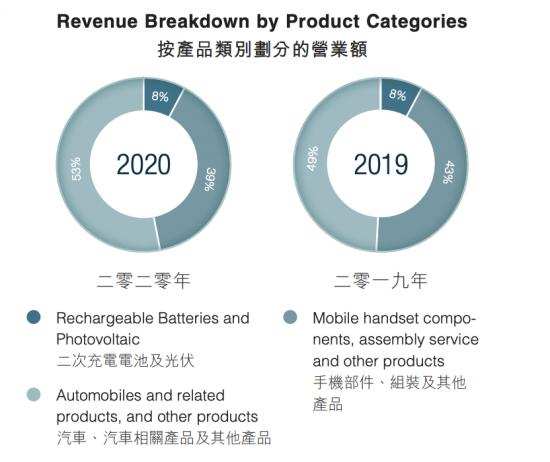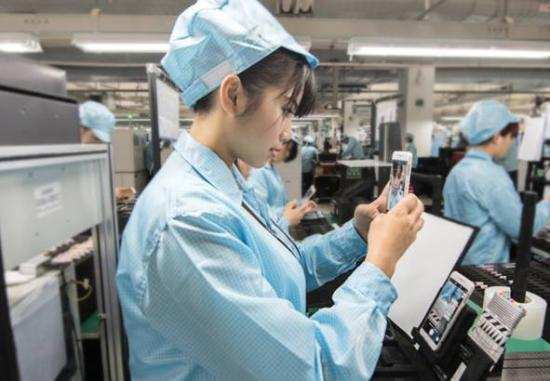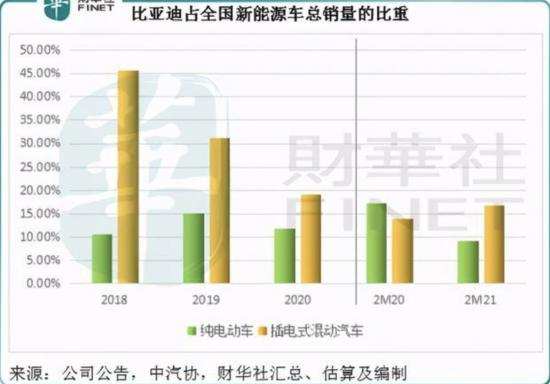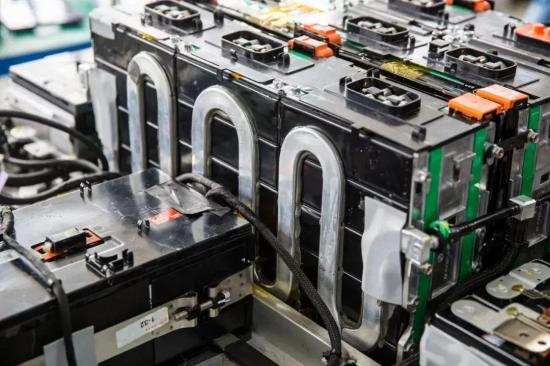The new forces of Weilai and Xiaopeng are fighting for the beach, can BYD break through?
Text丨Intelligent Relativity (aixdlun)
Author丨Jiang Sijing
In 2020, the new energy vehicle sector will explode. The myth of Tesla’s ten times market value growth has led to domestic new energy car companies such as Weilai, Xiaopeng, and BYD’s performance.
According to statistics, in the past year, the share price of BYD A shares soared from 47 yuan to 194 yuan, an increase of 308.11% throughout the year, and the highest market value stood at 600 billion yuan. In H shares, BYD’s share price rose by 423.93 throughout the year. %.
Under the trend of new energy vehicles, the capital market is unprecedentedly active. However, the rapid rise in the industry’s prosperity has also attracted doubts about the “valuation bubble”. For new energy car companies that have experienced a year of skyrocketing, they really have to use their performance to speak.
On March 30th, Beijing time, BYD released its 2020 annual report. Through this annual report, looking back at BYD’s 2020, what valuable information can be explored?
Electric vehicles are “dry” but petrol vehicles
In 2020, when a lot of car companies are mourning, BYD “survived.”
According to BYD’s annual report data, BYD (including “BYD shares” and “BYD Electronics”) last year’s total revenue was 156.598 billion yuan (unit: RMB, the same below), compared to 127.739 billion in the same period in 2019 Yuan, a year-on-year increase of 22.59%.
(Source: “Intelligent Theory of Relativity” collection and sorting)
In 2019, the new energy vehicle market ushered in the largest year of subsidy decline in history. Coupled with the first implementation of the National Sixth Standard in some parts of the country in July of that year, it gave car companies a big punch. BYD Also not immune, the annual revenue fell 1.78% year-on-year.
The calendar turned a page back, but the car companies’ melancholy was not dissipated. The fleeting years are not good, and domestic car companies have had another “thrilling” year. In 2020, SAIC Group’s revenue and net profit hit a five-year low; Geely’s 2020 revenue fell below the 100 billion yuan mark, and its net profit fell by more than 30%.
(Source: Daily Car Observation)
The revenue growth rate of BYD in 2020 is among the top auto companies that have announced their annual reports. Except for the negative growth in revenue in the first quarter of 2020, which was affected by the epidemic, the remaining three quarters achieved positive growth. Compared with the auto companies with negative revenue growth throughout the year, BYD’s recovery rate in the second half of 2020 is still relatively fast.
The main reason for BYD’s annual revenue growth is its revenue from automobiles and related products. According to the financial report, the revenue of BYD’s auto and related products and other products is approximately 83.993 billion yuan, accounting for 53.64% of total revenue, an increase of 32.76% year-on-year.
Although the auto business has experienced considerable year-on-year growth in the turbulent 2020, when it comes to auto sales, BYD’s report card is not so glamorous and shows a “polarization” trend.
According to the financial report data, the production and sales of BYD’s new energy vehicles in 2020 will be down year-on-year, with output of 194,100 vehicles, a year-on-year decrease of 14.73%; sales of 162,900 vehicles, a year-on-year decrease of 12.53%.
In contrast, the sales performance of BYD fuel vehicles is better than its new energy vehicles. The sales of BYD fuel vehicles in 2020 will be 231,700, an annual growth rate of 3.81%.
Interestingly, according to data from the Association of Passengers, the national car sales in 2020 fell by 1.9% year-on-year, while new energy vehicles bucked the trend and increased by 10.9% year-on-year. The growth of BYD’s fuel vehicles and electric vehicles is contrary to the general environment of the industry, and the growth of total revenue in 2020 is largely driven by the sales of fuel vehicles.
(Source: Caihua News Agency)
In 2020, BYD’s gross profit margin level is 25.2%, compared with Tesla, it is in no way dwarfed. In an industry environment where the profit margins of traditional fuel car companies are already at a low level, BYD’s gross profit margin level is relatively good. It can also be seen that BYD’s new energy vehicle sales have declined, but it still maintains a relatively high gross margin level.
The first quarter of 2021 is about to become history. In the first two months of 2021, BYD’s new energy passenger vehicle sales increased 2.06 times year-on-year to 29,900 units, which seems to be quite satisfactory. However, it should be noted that during the period, the nationwide new energy vehicle sales increased by 3.82 times year-on-year to 289,000 units. In the first two months of the year, Weilai, Xiaopeng and Ideal New energy vehicle deliveries increased by 4.6 times, 5.8 times, and 4.3, respectively. Times.
BYD, which has always been at the forefront of traditional auto companies in its new energy vehicle business, may well think about its future development strategies.
Mobile phone foundry becomes a profit growth point
From the perspective of “Intelligent Relativity”, although BYD is a car company, it is quite different from traditional car companies such as SAIC, Geely, and GAC. This is because, besides auto products, BYD has a large business line. Percentage of revenue.
According to financial report data, in 2020, BYD’s mobile phone components, assembly and other product business revenues will be about 60 billion yuan, an increase of 12.48% year-on-year, accounting for 38.3% of total revenue; secondary rechargeable batteries and photovoltaic revenues will be approximately 12 billion yuan, a year-on-year increase of 15.06%, accounting for about 7.7% of the total annual revenue. In addition to auto-related businesses, mobile phone foundry and battery businesses constitute two other important sources of revenue for BYD.
(Source: BYD Financial Report)
In the field of ODM foundry, BYD can be said to be second only to Foxconn, and its strong mobile phone foundry production capacity can be seen through the amount of profit it creates. According to financial report data, in 2020, the net profit of BYD shares (mainly responsible for automobile-related business) attributable to the parent was 4.234 billion yuan, a year-on-year increase of 162.27%; and BYD Electronics (mainly responsible for mobile phone foundry) net profit was 5.441 billion yuan, a year-on-year increase of 240.49% .
From the data point of view, the net profit and year-on-year growth rate generated by BYD’s electronic foundry are better than its automobile-related business. It can be seen that although theThe revenue accounted for more than half, but the main body of its profit was the mobile phone foundry business.
At Apple’s autumn conference on September 16, 2020, BYD has become the foundry party for the new iPad. It is expected to get more Wi-Fi version iPad assembly orders in 2021, and Wi-Fi version iPad accounts for the entire iPad output. The volume is about 60-70%, so BYD Electronics still has a lot of room for growth in iPad assembly.
On January 19 this year, Glory, which has just become independent, announced that Shenzhen Technology and BYD Electronics are their mobile phone OEM manufacturers. Among them, BYD Electronics has more than 50 million OEMs.
(Source: Baidu Gallery)
BYD’s foundry business is developing in full swing, but from the mobile phone foundry industry, this is not a high-margin business. Foxconn has not yet announced the 2020 annual report, but based on past data, the gross profit margin of Foxconn’s foundry business has been maintained at around 5% all year round. If the mobile phone foundry business can really bring a lot of real money, Foxconn will not be in Frequent movements in car building.
In 2020, BYD Electronics’ gross profit margin is 13.2%. Although this gross profit margin is higher than Foxconn, it is still far from the 25.2% gross profit margin of the automotive business. Obtaining sufficient profits is the first principle pursued by enterprises. The future development space of mobile phone foundry is definitely not as good as that of new energy vehicles. BYD is also adjusting its industrial structure.
(Source: Caihua News Agency)
In the 2019 annual report, BYD’s mobile phone components and assembly business revenue accounted for nearly 43% of BYD’s revenue in 2019, and this proportion will drop to about 38% in 2020. Extending the timeline, the proportion of BYD’s mobile phone foundry business revenue is decreasing year by year, and the revenue of automobile-related businesses is increasing year by year.
“Intelligent Relativity” believes that BYD’s mobile phone foundry business has a longer development history than the automotive business. Under the background of declining subsidies for new energy vehicles and intensified competition on the track, the mobile phone foundry business may support profit growth. “Helplessness”, but from a long-term perspective, new energy vehicles are BYD’s future breakthrough point and growth point.
How should we go in the future?
Xiaomi finally admitted to building a car. The outside world speculated that the new car might be manufactured by BYD. However, Lei Jun did not mention the details of the car built by Xiaomi at the press conference that night. For what everyone wants to know, how Xiaomi will build and build the car. Lei Jun did not answer what kind of car, OEM or self-built factory.
For BYD, after OEM production of Xiaomi mobile phones, if it can really attract Xiaomi, a customer and partner who is “not bad”, Wang Chuanfu may also be able to breathe a sigh of relief. After all, he once led the domestic new energy vehicles. BYD has faced many challenges recently.
(Source: Caihua News Agency)
As can be seen from the above figure, the proportion of BYD plug-in hybrid vehicles in the total sales of new energy vehicles in the country has dropped a lot, and the proportion of pure electric vehicles has also experienced considerable fluctuations. Behind this is Weilai. The rapid rise of late wavers such as Xiaopeng, Xiaopeng and Tesla have seized BYD’s previous market share.
In the first two months of 2021, BYD’s market share in the new energy vehicle market was 10.34%, down 1% from last year; the market share of Weilai, Ideal, and Xiaopeng were 4.43%, 2.66%, and 2.85, respectively. %, both achieved growth compared to last year. Although the current market share of the three combined is equal to BYD, the increase in market share seems to be predictable under the background of the increase in mass production and delivery of the “three fools”.
In the 2020 financial report, BYD also received a total of 2.302 billion yuan in new energy subsidies, which shows that it is still a beneficiary of domestic new energy vehicle subsidies. In 2021, as the new energy vehicle market shifts from policy-driven to market-driven, BYD will undoubtedly face a new round of tests.
BYD, which started with batteries, launched a “blade battery” in March last year, which caused a turmoil in the market, and BYD’s remarks about challenging the status of the Ningde era were also rampant. But in the view of “Intelligent Relativity”, this argument may still beIt’s early.
(Source: Baidu Gallery)
From January to December 2020, CATL’s installed capacity of power batteries will be approximately 45Gwh and domestic installed capacity will be 31Gwh, with a domestic market share of 50%, ranking first, and a global market share of 25%, exceeding LG’s installed capacity. BYD’s annual installed capacity is 9.48Gwh, with a domestic market share of 15%. From the purely absolute value, the installed capacity of BYD and Ningde still has a multiple gap.
“Intelligent Relativity” believes that BYD can stand in the forefront of the transition from traditional car companies to new energy vehicles. In addition to policy support, self-developed and self-developed key components such as power batteries and car chips Production is indispensable, which makes BYD an ecological closed-loop manufacturing of new energy vehicles.
But this closed-loop ecological advantage is gradually being broken. Tesla currently has self-developed autopilot chips, and the current autopilot system has been able to achieve L3 level driving assistance, which is in the global industry At the leading level; Geely is also developing its own power battery. Although the current progress has not been disclosed, it can also be said to be a potential threat.
BYD, now there is a new explanation-build your dreams, but it is still quite difficult to realize this dream.
